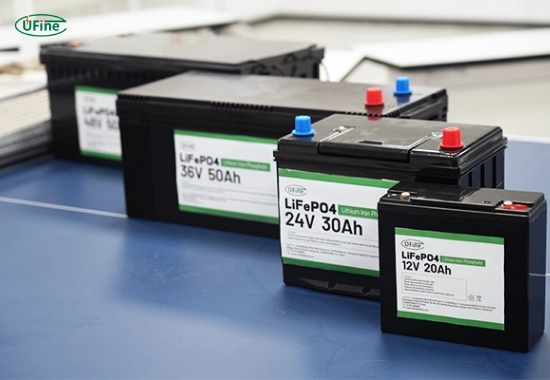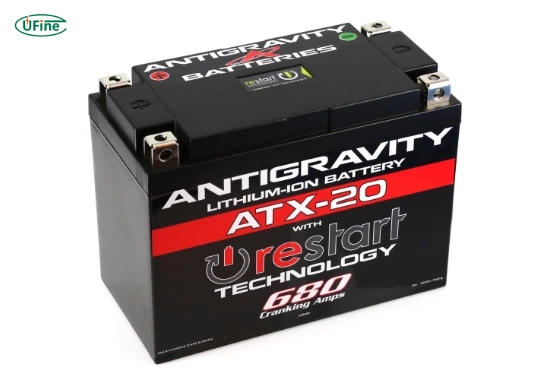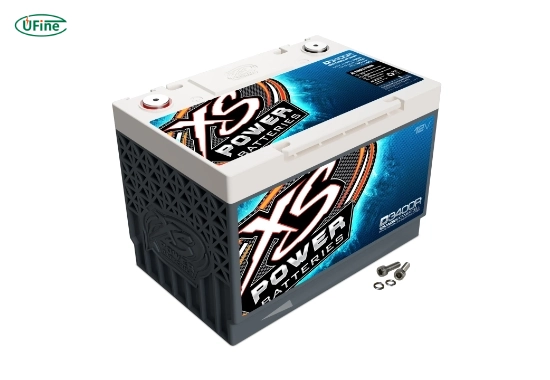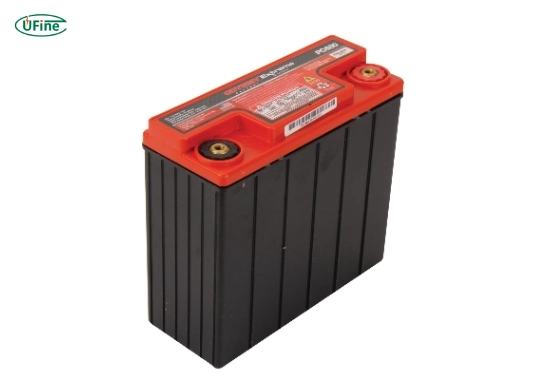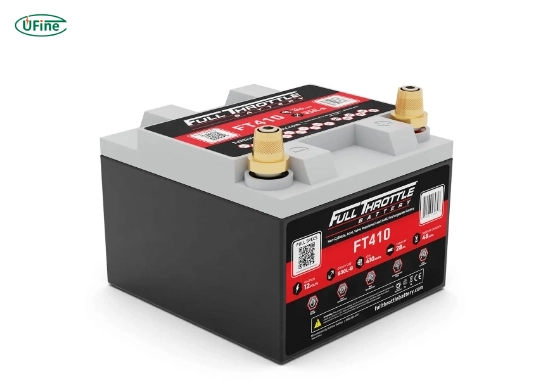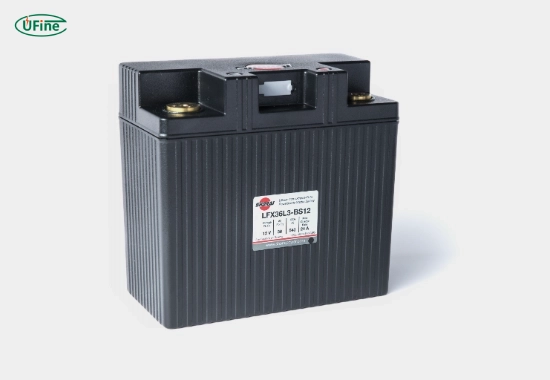
- Part 1. What is a race car battery?
- Part 2. Why weight reduction matters in motorsports
- Part 3. Key features to look for in a race car battery
- Part 4. Types of race car batteries: AGM vs. lithium
- Part 5. Top 7 lightweight race car batteries for serious motorsports performance
- Part 6. Choosing the right battery for your application
- Part 7. Installation tips for race car batteries
- Part 8. Lifespan and maintenance of race car batteries
- Part 9. Safety considerations with lithium batteries
- Part 10. FAQs about lightweight race car battery
When searching for the best race car battery to power your high-performance track, drag, or rally build, the key is finding a battery that delivers maximum power while minimizing weight. So, what is the best lightweight race car battery for motorsports? The answer depends on your vehicle’s unique power requirements, but the top batteries are compact, efficient, and engineered to thrive under extreme racing conditions.
This comprehensive guide explores the top 7 lightweight race car batteries trusted by both motorsport professionals and weekend enthusiasts. Whether you are building a dedicated race car or upgrading your current setup, this article will help you choose the right battery to unlock better performance, faster starts, and more consistent power delivery.
Part 1. What is a race car battery?
A race car battery is a specialized energy source designed for motorsport vehicles. Unlike traditional car batteries, which prioritize longevity and cost savings, race car batteries focus on lightweight design, high cranking power, and the ability to withstand harsh racing environments.
These batteries are designed to meet the demanding electrical requirements of high-performance engines and advanced vehicle electronics. A high-quality race car battery will offer fast discharge rates, strong cold cranking amps (CCA), and exceptional resistance to vibration, heat, and shock.
Part 2. Why weight reduction matters in motorsports
In racing, every pound of weight affects acceleration, braking, cornering, and the overall dynamics of the vehicle. Reducing weight improves lap times, responsiveness, and fuel efficiency. Because the battery is often mounted high or forward in the chassis, even a small weight reduction can significantly improve a car’s center of gravity and balance.
Swapping a conventional 40-pound lead-acid battery for a 5-pound lithium alternative can lead to more agile handling and faster throttle response. This is why lightweight race car batteries are considered one of the most effective and easiest performance upgrades.
Part 3. Key features to look for in a race car battery
Choosing the right battery for your motorsports application involves more than just selecting the lightest option. Consider the following essential features:
- Weight: Lighter batteries improve performance and vehicle dynamics
- Cranking Power (CCA): Determines how easily the battery turns over the engine
- Capacity (Ah): Impacts how long your battery can support accessories or electronics
- Durability: Must resist vibration, impact, and high temperatures
- Maintenance Requirements: Lithium batteries are generally maintenance-free
- Mounting Flexibility: Smaller batteries offer more installation options
- Recharge Rate: Fast charging enables shorter pit stops or downtime
- Battery Management System (BMS): Prevents overcharging and overheating
Understanding these specifications helps you make an informed decision based on your build type, driving conditions, and performance goals.
Part 4. Types of race car batteries: AGM vs. lithium
There are two main types of race car batteries available today: Absorbent Glass Mat (AGM) and lithium-ion batteries.
AGM batteries use a lead-acid design with fiberglass mats that absorb the electrolyte. They are more affordable and widely available, offering decent durability and power for entry-level builds.
Lithium-ion batteries, particularly those based on Lithium Iron Phosphate (LiFePO4), are significantly lighter and more efficient. They have a longer lifespan, higher energy density, and superior resistance to heat and vibration. However, they are generally more expensive and require a compatible charging system.
For high-performance applications, lithium batteries are the clear choice.
Part 5. Top 7 lightweight race car batteries for serious motorsports performance
Below are the top 7 lightweight race car batteries used in competitive motorsports. Each selection is based on weight, power output, reliability, and real-world performance on track, drag strip, and rally stages.
1. Ufine Battery: Custom Lightweight Lithium Racing Batteries
- Weight: Customizable
- Technology: Lithium Iron Phosphate (LiFePO4)
Ufine Battery is a lithium battery manufacturer offering custom lithium battery solutions for motorsports. Our batteries use advanced LiFePO4 technology to deliver high performance with minimal weight. Unlike off-the-shelf options, Ufine provides fully tailored designs to suit specific applications, whether for drag, time attack, or endurance rally racing.
Ideal for: Professional motorsports teams, custom race builds, electric conversions
2. Antigravity ATX-20 Restart Lithium Battery
- Weight: 3.8 lbs
- CCA: 680
- Technology: Lithium Iron Phosphate
The Antigravity ATX-20 is an award-winning lithium battery for racing and performance cars. It features Restart Technology that reserves enough energy to restart the vehicle, even if fully drained. Compact and ultralight, it’s ideal for weekend racers and autocross builds.
Ideal for: Lightweight track builds, autocross, weekend racers
3. Braille B129 Lightweight AGM Battery
- Weight: 9.5 lbs
- CCA: 813
- Technology: AGM
Braille is a trusted name in motorsports, and the B129 is widely used in rally and drag applications. It provides strong cranking power in a compact format. Though not the lightest, it is durable and cost-effective.
Ideal for: Drag racing, rally, and grassroots motorsports
4. XS Power D3400R Racing Battery
- Weight: 48 lbs
- CCA: 1000
- Technology: AGM
Heavier than lithium options, the XS Power D3400R delivers extreme cranking power. Perfect for vehicles with high electrical loads such as sound systems and data loggers. Often used in drag racing where output matters more than weight.
Ideal for: High-powered builds with heavy electrical systems
5. Odyssey PC680 Lightweight Performance Battery
- Weight: 15.4 lbs
- CCA: 170
- Technology: AGM
The Odyssey PC680 is a favorite for compact and spec series cars. While it has lower cranking amps, its reliability and long life make it great for lower-displacement engines.
Ideal for: Spec racing, club-level builds, budget-conscious racers
6. Full Throttle FT410 Lightweight Racing Battery
- Weight: 10 lbs
- CCA: 350
- Technology: AGM
The FT410 is built for short-distance motorsports like hill climbs and autocross. It offers reliable power output and durability in high-vibration environments.
Ideal for: Hill climbs, time attack, off-road racing
7. Shorai LFX36L3-BS12 Racing Battery
- Weight: 4.96 lbs
- CCA: 540
- Technology: Lithium Iron Phosphate
Known for high energy density and long shelf life, the Shorai LFX36L3-BS12 is ideal for rally and drift builds. Lightweight and quick to charge, it’s suitable for vehicles stored between races.
Ideal for: Rally, drift, and endurance builds
Part 6. Choosing the right battery for your application
Your choice of race car battery should match your vehicle’s engine size, electrical system, and racing style.
- Track builds benefit from lightweight lithium batteries with moderate CCA
- Drag racing demands high cranking power, sometimes at the cost of extra weight
- Rally and off-road vehicles need rugged batteries with strong vibration resistance
- Endurance racing may require dual batteries or high-capacity lithium setups
If your vehicle has advanced electronics, data acquisition, or in-car communication systems, selecting a battery with higher reserve capacity is essential.
Part 7. Installation tips for race car batteries
To get the most from your battery, proper installation is key:
- Disconnect the negative terminal of your old battery first
- Securely mount the new battery using vibration-resistant mounts
- Use high-quality terminals and ensure tight connections
- Avoid placing the battery near heat sources
- Connect a voltage monitor or battery tender during storage
Always follow manufacturer installation guidelines and inspect the battery before every race or session.
Part 8. Lifespan and maintenance of race car batteries
Battery lifespan depends on type, usage, and maintenance:
- AGM batteries typically last 3 to 5 years with regular charging
- Lithium batteries can last 6 to 10 years when properly managed
To extend battery life:
- Keep the battery charged when not in use
- Avoid deep discharge cycles
- Store in a cool, dry place
- Use a compatible charger for lithium batteries
Part 9. Safety considerations with lithium batteries
Modern lithium batteries are safe when used correctly. Most race-grade lithium batteries include a Battery Management System (BMS) that monitors temperature, voltage, and charge levels.
For added safety:
- Use only recommended chargers
- Never expose to fire or puncture the casing
- Install a fuse or circuit breaker near the battery terminal
- Choose batteries with certifications like CE, RoHS, and UN38.3
Part 10. FAQs about lightweight race car battery
What is the best lightweight race car battery?
The Antigravity ATX-20 and Ufine custom lithium batteries are among the best options for lightweight performance, depending on your budget and customization needs.
Can I replace an AGM battery with a lithium one in my race car?
Yes, but make sure your car’s charging system supports lithium batteries. Also, check if the battery size and mounting points are compatible.
Are lithium batteries safe for racing?
Yes, especially LiFePO4 types. They are thermally stable and include protection systems to prevent overcharging and overheating.
How much weight can I save by switching to a lithium battery?
On average, switching from a 40-pound lead-acid battery to a 5-pound lithium model can save over 30 pounds, significantly improving vehicle dynamics.
Do I need a special charger for lithium race car batteries?
Yes. Lithium batteries require lithium-compatible chargers to maintain proper voltage and extend battery life.
Related Tags:
More Articles

Big Square Battery Safety Standards You Must Know
Learn key safety standards for big square batteries to avoid fire risks, shipping delays, and compliance issues in EV, industrial, and energy storage projects.
Big Square Battery Applications in Solar & Industrial Equipment
Big square batteries deliver high capacity, stable output, and long life for solar, industrial, and backup power. Explore key uses and advantages.
Big Square Battery vs Cylindrical Battery: Complete 2025 Guide for EVs, ESS & Industrial Devices
Choosing the right battery is key for designers and engineers. Compare big square vs cylindrical batteries to find the best fit for your application.
How to Choose the Right Big Square Battery for Your Device?
If you’re choosing a big square battery for EVs, solar, or mobility devices, this guide helps you pick the right solution for real-world needs.
Big Square Battery Complete Guide: Types, Uses & Buying Tips
If you are choosing a big square lithium battery for EVs, solar, RVs, or AGVs, this guide helps you select the right NMC, LFP, or LTO solution with examples.
